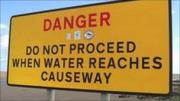This one came through in the newsfeeds this morning. It’s a terrible tragedy – two 18-year olds were killed in a motor crash in North Carolina, USA.
However, consider the comment:
Police estimated that the car involved in Monday’s crash on Overlook Road in South Asheville was traveling at 65-70 mph in a 35 mph zone.
We’ve tried shock tactics in the UK, with graphic videos on YouTube, and various talks and lectures. But does it change the way people behave?
The problem is that time heals all wounds – ALL wounds. So although a tragedy like this gets everyone saying “Oh, I’ve learned my lesson”, what they really mean is that they have learned the lesson until the memory fades, then their regular behaviour resurfaces. And those not connected with the event just carry on regardless anyway.
Whenever something like this happens, someone is bound to trot out the old “immortal” card, and suggest that teenagers think that they’re immortal or something. Well, no offence, but that is bloody stupid. They don’t think they’re immortal at all. They just haven’t considered anything beyond showing off and breaking rules.
And stop keep saying it is just teens. It isn’t. This sort of arrogance, ignorance, and stupidity can manifest itself in anyone of any age. The only teen-specific thing is experience. They’re not as brilliant as they’d like to think, because driving skill – even enough to avoid a major accident whilst breaking the law – only comes with experience.
If you look at the “Timeline of tragedy” box in the link I gave above, the causes of fatal crashes in the same area over the last three years involving teenagers include:
- 15-year old driving his father’s truck on a learner permit
- 16-year old doing 65mph in a 35mph zone on a bend
- 16-year old doing 50mph in a 40mph zone without a seatbelt
- 16-year old reading a text and doing 52mph in a 45mph zone
- 18-year old passenger without a seatbelt
- 16-year old driver and 14-year old passenger doing 85mph
- 18-year old passenger – 20-year old driver was doing 70mph in a 45mph zone
- 16-year old passenger – 17-year old driver was doing 60mph and both had been drinking
And this is just a small area of the world. The same thing is happening every day, everywhere.
The article concludes with this:
Why teens crash
Per mile driven, teen drivers are four times more likely than adult drivers to crash. Factors that contribute to teen crashes and injuries include:
- Driver inexperience: Crash rates are highest during the first year a teen has a license.
- Driving with teen passengers: Crash risk goes up when teens drive with other teens in the car. The risk increases with each additional passenger.
- Nighttime driving: For all ages, fatal crashes are more likely to occur at night, but the risk is highest for teens.
- Not wearing seat belts: Compared with other age groups, teens have the lowest rate of seat belt use.
- Distracted driving: Distractions — such as talking or texting on cell phones, eating, or playing with the radio — increase teen drivers’ risk of being in a crash.
How long will it be before someone extracts the obvious best solution to the problem from all this?
 The
The  As you can see, the signs are extremely misleading and could easily be misinterpreted by, say, an orang-utan or perhaps a small dog. But you’d think that those who outwardly resemble humans would understand (even if they are Australian).
As you can see, the signs are extremely misleading and could easily be misinterpreted by, say, an orang-utan or perhaps a small dog. But you’d think that those who outwardly resemble humans would understand (even if they are Australian).